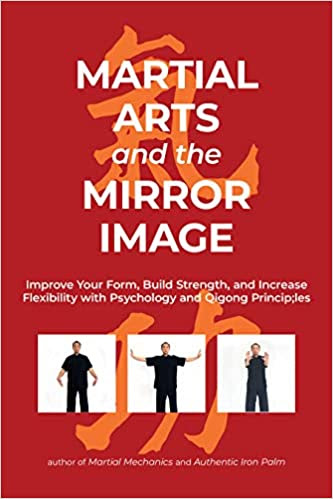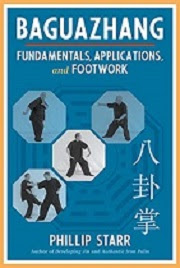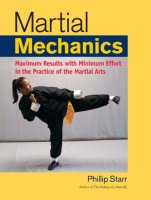by Phillip Starr
Last April marked my 69th year in the martial
arts. I recall looking through a copy of my first book, The
Making Of A Butterfly, and
thinking back to my early days of training under Master W. Chen.
I remembered something he'd said that made me wonder if I would be
able to continue training in the Chinese martial arts. I was in the throes of a religious experience. That is, I thought I
was seeing God! I was doing my best to hold the "ma"
(commonly known as "ma-bu", but more correctly called "qi
ma-bu", or "horse-riding stance"). My legs were on
fire and shaking like a jackhammer. I could hardly keep my back
straight and breathe correctly. I collapsed, of course, but I
resolved to get right back up and continue the exercise. And within
a few seconds my legs gave way again.
Sifu Chen stopped me and told me about the vital importance of
learning the "ma", of building a solid foundation. He told
me that the first seven years of training were devoted to this end.
SEVEN
YEARS???
Yep. He said it calmly, as if it was a fact that everybody knew and
accepted. I couldn't imagine continuing this kind of training for
seven years! But that's what he meant and that's exactly what I
ended up doing.
Oh sure, I was taught many other things during that time. I learned
all kinds of techniques and forms and two-person exercises and joint
techniques and throws and...lots of stuff. But the emphasis on the ma
was always there. I can't count the number of times that I listened
to lectures about the importance of it.
I figured that if it was important enough for my sifu to constantly
lecture us about it, it was something I'd better practice. A lot.
And I did. Eventually, I came to understand its value. This isn't
something that can be completely understood just by reading or
thinking about it. It has to be practiced, physically
experienced over an extended period of time. That's the only way to
"get it", to acquire the knowledge and ability that comes
as a result of such painful practice.
The reason I thought about it was because my editor had sent me a
copy of a little blurb they were putting on the back cover of my
book. It's a quote from the book about learning the "ma."
I thought about how long it had been since I'd first started training
and then noticed another line they'd put on the cover...that I'd been
training for over 50 years (at the time the manuscript was sent in,
it was only 48 1/2 years) and I was stunned. I guess time flies when
you're having fun.
But even after five decades of practice (part of which passed before
I met Sifu Chen), I have to say that he was absolutely right.
Without a proper foundation, learning real martial arts is
impossible.
Building a strong "ma" doesn't necessarily mean that you
only practice standing in a horse-riding stance for a certain length
of time each day; it also has to do with learning how to step, how to
shift your weight and move, how to stand in other stances (although
the "ma" is the mother of all stances), how your breathing
affects your movement, how your yi (intention) affects your movement,
how to maintain balance when standing still and moving...lots of
things. But they all have to do with the foundation. The "ma."
I
remember back when beginning judo students were made to spend most of
their practice time learning not only ukemi (breakfalls), but the
basic stance (jigotai). It's kind of a second cousin to the "ma."
Students practiced shifting and stepping in this position. Times
have changed; I don't think most modern judoists have ever in so much
as even heard of this posture.
There's no question that the vast majority of contemporary kung-fu
(and karate) practitioners have ever practiced the "ma."
They may know what it is but they don't "have" it. They
can intellectualize about it but they have no real foundation.
Sometimes I hear internal stylists argue that they don't use the
horse-riding stance very much, if at all. That's fine. "Ma"
literally means "horse" (as well as other things), but the
term "ma" when it's use in conjunction with fundamental
stance(s) simply refers to the style's most basic way of standing.
In xingyiquan, baguazhang, the basic stance is "sanzai"
(aka. "sancai"). That's their "ma." In taijiquan
- well, it depends on who you talk to...some would say they do have a
horse-riding stance (it appears in the posture known as Commencement)
while others use the "sanzai" stance. Whatever. The point
is that they do have a single, fundamental stance.

The problem is that most martial arts enthusiasts nowadays don't
practice their "ma" anymore. In many cases their teachers
don't (and probably never have), either. The teacher is sometimes
afraid that if he makes students engage in such uncomfortable
training, they'll quit - and that means loss of income. So they
don't make students do it anymore. And now we're seeing the results
- martial arts practitioners who have no real power, no real skill.
No "ma."
I remember that my sifu used to insist that if we stood in the "ma"
every day, our vital energy (qi) would eventually sink down to the
dantien and we would be able to express great power. I couldn't
imagine how this was possible. How could standing in this painful
position accomplish that?
And he said that unless we built a solid "ma" we'd never be
able to emit real power. We'd have no true strength. That confused
me, too. But he was absolutely right. And after watching the
development of martial arts over the last fifty years, I must say
that this old time-tested training method needs to be re-emphasized.
Practicing the "ma" has a positive impact on both physical
and mental health, too. Many years ago, kung-fu teachers in China
would often recommend it as a sort of therapy for a variety of
ailments, especially for problems with the stomach and
intestines. It was prescribed for some respiratory sicknesses, too.
It's
also an excellent tool for developing a strong yi (intention) and
spirit. Try standing in it for ten or fifteen minutes and you'll
understand why.
Most students loathe this kind of training. They want to jump
right into the martial arts and get into the "meat" of it.
They fail to see how standing in some static posture or doing boring
drills like "walking the square horse" are going to help
them become superior fighters.
But they do. It just takes time. You can't hurry the process. You
have to learn patience, you have to willing to endure great
discomfort, and you have to develop an iron will.
For seven years.










.jpg)
.jpg)
.jpg)
.jpg)
.jpg)


.jpg)
.jpg)
.jpg)
.jpg)




.jpg)








.jpg)

.jpg)




.jpg)
.jpg)
.jpg)





.jpg)


.jpg)





.jpg)













